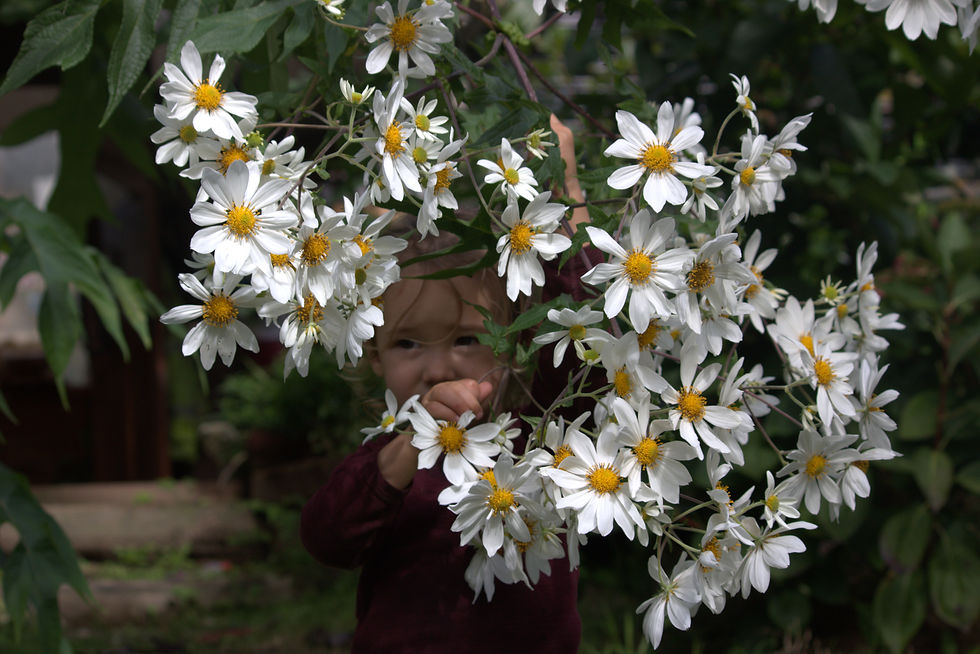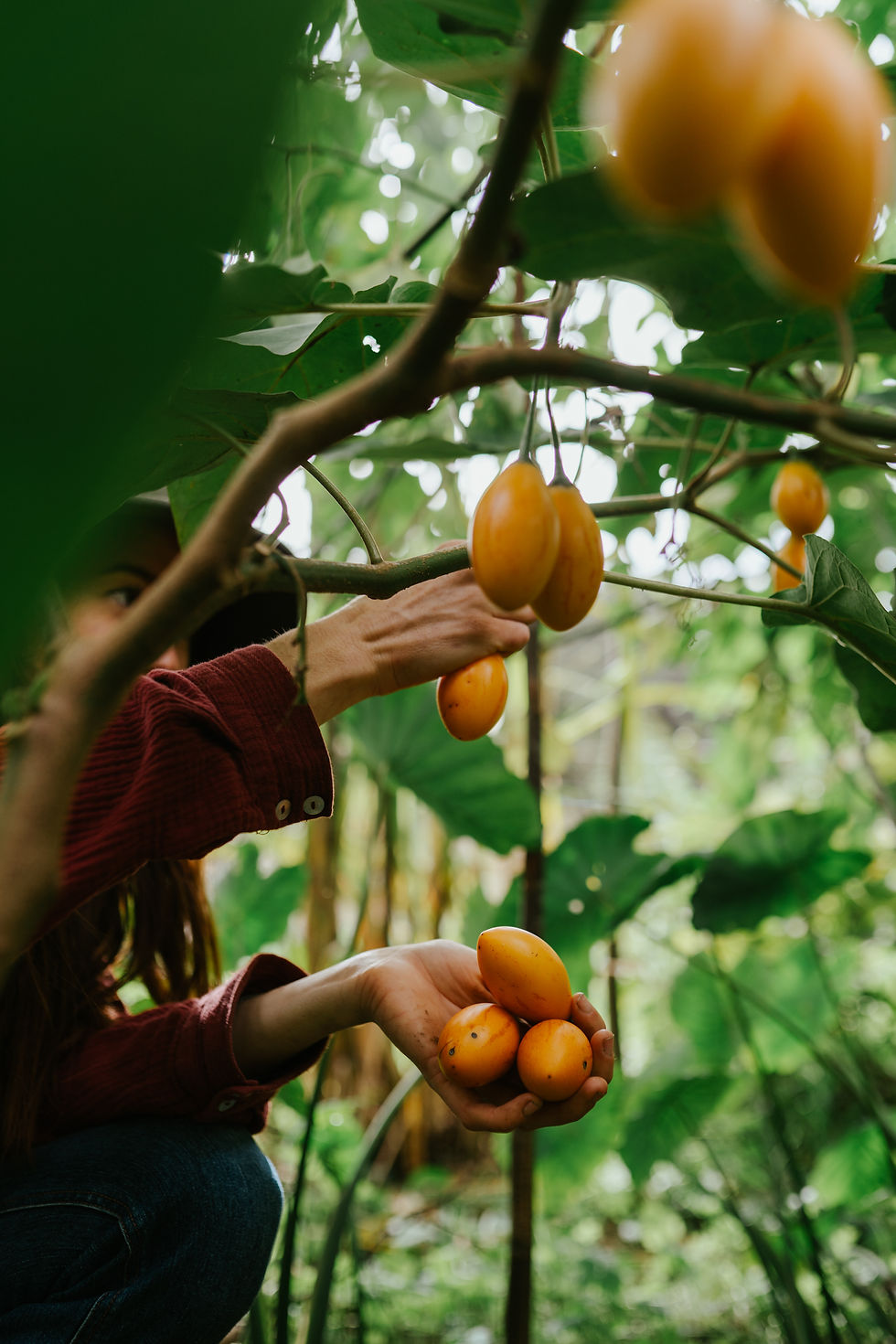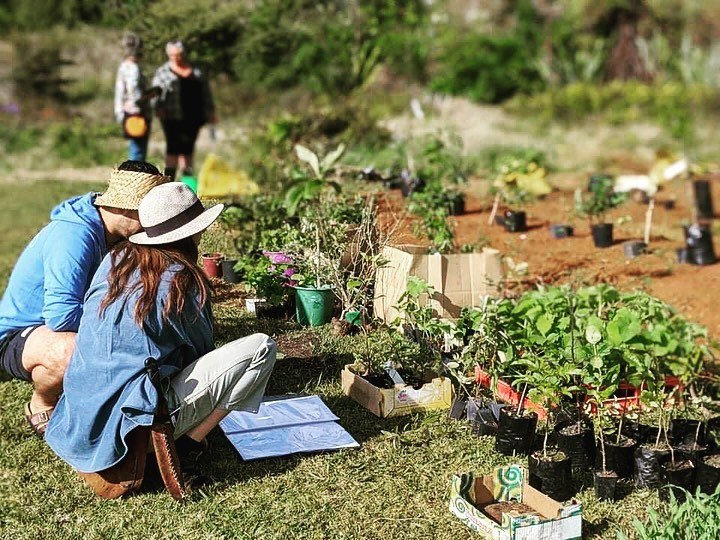How a Food Forest Builds Resilience for Your Family
- Frida Keegan

- Jun 30
- 3 min read
Updated: Jul 7
In the rhythm of modern life—fast, fragmented, and often disconnected—many of us are quietly craving something more rooted. A space where children can run barefoot beneath trees. A place where food grows not just in rows, but in relationships. A return to something ancient, alive, and deeply human.
That’s where the story of Tree Born forests begins.


What Is a Food Forest?
At its heart, a food forest is a garden designed to mimic the intelligence and dynamic nature of a wild forest. Instead of growing food in single-species beds, we plant in layers: trees, shrubs, herbs, vines, roots, and groundcovers—all working together. Every plant plays a role. Every species supports another. What grows is food. It’s resilience. It’s connection. It’s life, layered and alive.
Rooted in Syntropic Agroforestry
Our work is grounded in the rhythms of syntropy—a form of agriculture that doesn’t suppress nature but moves in step with it. Where conventional farming pushes against life’s natural flow, syntropy follows it, accelerating the regenerative forces already present in the land.
The result? A vibrant, fast-growing ecosystem that builds soil, restores biodiversity, feeds people, and sequesters carbon—without synthetic inputs or fossil-fuelled crutches.
Syntropic food forests are productive, yes. But more than that, they are resilient, relational, and brimming with intelligence.

The Tree Born Forest: A Place to Grow, Gather, and Remember
At Tree Born, we design food forests as 20m² forest sanctuaries—hexagon-shaped plantings inspired by the sacred geometry of bees. These forest “cells” echo the honeycomb—each one a self-sustaining unit, and yet part of a larger, living whole.
At the heart of each cell is a chosen tree—a living anchor offering shade, symbolism, and a place to pause, reflect, or simply be. Around it, layers of edible and support plants spiral outward in a pattern that invites exploration. Children follow winding paths, discovering berries, flowers, and insects along the way. These spaces are more than gardens—they’re living classrooms, healing sanctuaries, and places of belonging.
And like a hive, these cells can stand alone or replicate, forming a mosaic of reconnection across homes, schools, and communities.


Why Families and Children Thrive in Food Forests
Food forests offer something we often forget our children need: a relationship with the more-than-human world. When a child helps plant a tree, watches pollinators return, or picks fruit from a branch they helped nurture, they are learning and they belonging.
Small-Scale Systems with Big Impact
Tree Born’s forest designs are built for this moment. They’re small-scale, replicable, and carefully tailored to suit family life. Each 20m² planting is a compact, layered ecosystem that:
Produces a variety of perennial foods, year after year
Builds healthier soil and improves water retention naturally
Supports pollinators and local biodiversity
Offers a shaded, calm space for children to explore and learn outdoors
Reduces dependency on supermarkets and supply chains
Grows stronger and more productive with time
They are designed to meet both the practical needs of modern families and the deeper desire for a more connected, grounded way of living. They help create homes where food, nature, and family life can grow side by side—with resilience built in.
This is why we help create personalised food forests at Tree Born, because we believe that deep, reciprocal connection with nature is one of the greatest gifts we can offer our children.

Frida Keegan
Co-founder of Tree Born, Sapp and PermaDynamics.
Writer for On The Land Magazine



Comments